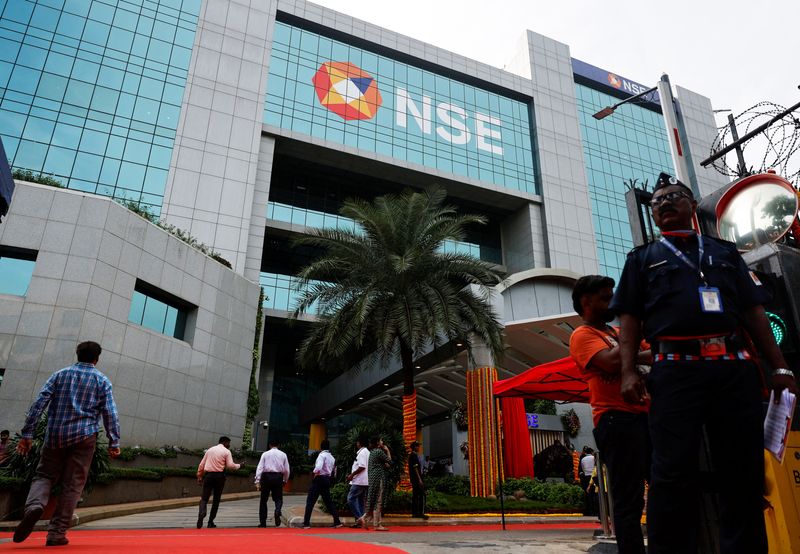By Bharath Rajeswaran
BENGALURU (Reuters) - India's NSE Nifty 50 and S&P BSE Sensex are trailing only Wall Street's Nasdaq and S&P 500 as top-performing indexes this year, with analysts expecting the rally to extend into 2025.
The Nifty and Sensex have gained 18.7% and 17% respectively in 2024, securing the third and fourth spots among major global bourses.
The Nasdaq and S&P have added approximately 22% and 20.5%, slightly ahead of the Indian benchmarks. Japan's Nikkei 225 and Germany's DAX follow India, rising 13% and 12%, respectively.
Earlier this week, India's weightage in a key MSCI index topped China for the first time.
"We expect the Fed rate cut to accelerate foreign inflows and create enough momentum in domestic markets to protect against downsides," analysts at Emkay Global said in a note.
India's stock market rally, driven by expectations of policy continuity following national elections in June and a robust growth outlook, gained further momentum after the U.S. Federal Reserve's significant rate cut on Sept. 18.
Foreign portfolio inflows, which had moderated in August, are on course for to hit a six-month high in September.
The rally has pushed the 12-month forward price-to-earnings ratios of the Sensex and Nifty to 23.6 and 24.4, respectively—the highest among emerging markets. Technical indicators show both indexes are now in overbought territory.
Expectations of soft landing for the U.S. economy will also likely boost sectors like information technology and pharma which earn a significant share of their revenue from the U.S., according to analysts.
Realty, autos, public sector enterprises, pharma and energy are among the top performing sectoral indices so far this year.
Domestic institutional and retail investors have also fueled the stock market buying into all dips.
Domestic institutional investors picked up shares worth a net of 3.23 trillion rupees since the start of the year, according to provisional data from National Stock Exchange.
Mutual funds too have remained net buyers since February 2021 with contributions through the systematic investment plan hitting record highs for 14 months in a row.

This has raised some concerns, with analysts at Jefferies saying the combined domestic inflows through mutual funds, direct participation, insurance and pension funds are "unsustainably high" of $7.5 billion per month between January and August.
The brokerage said it maintained a near-term cautious view on markets, small- and mid-caps.